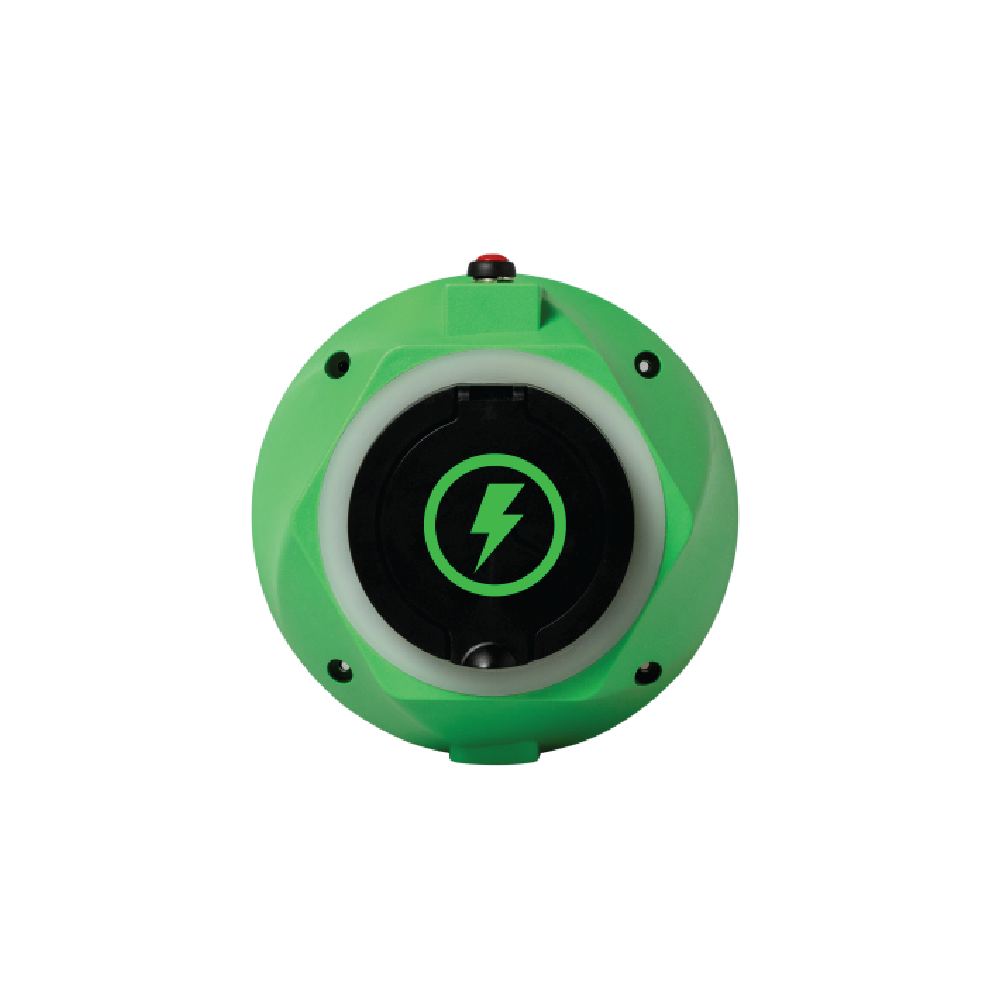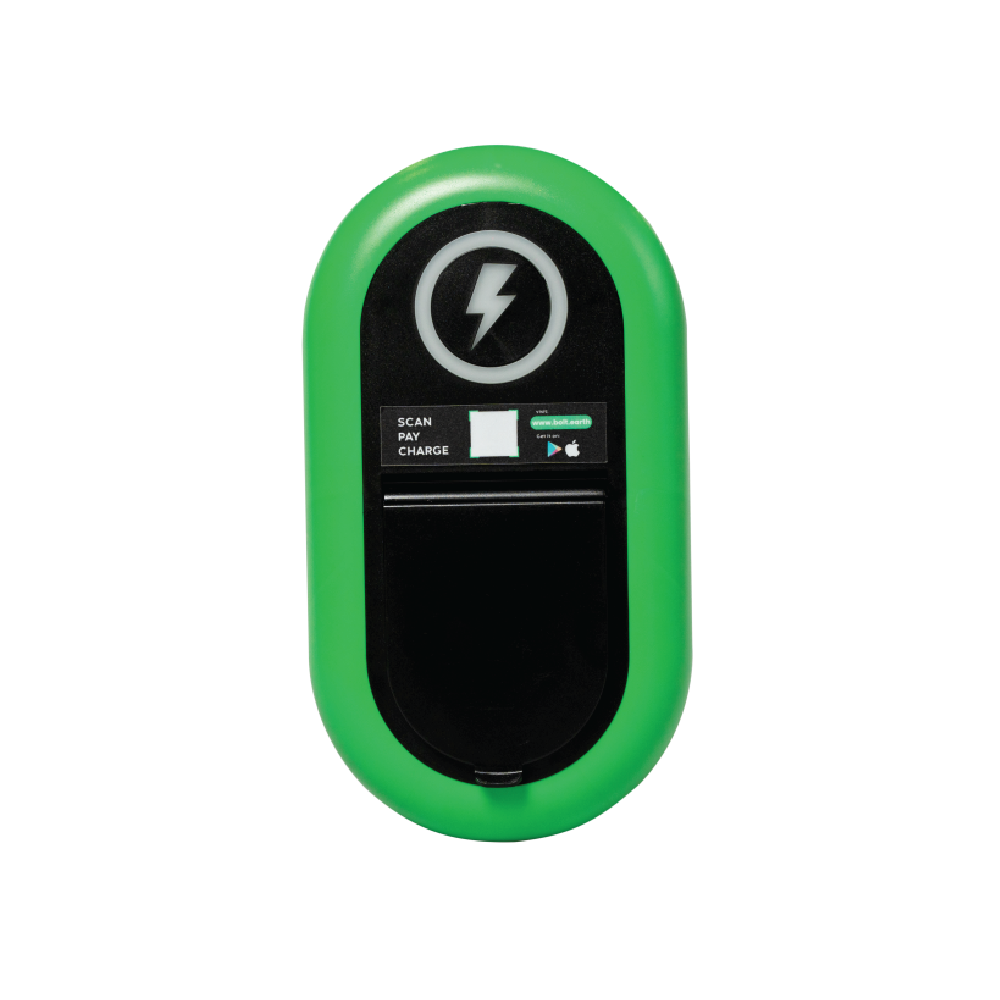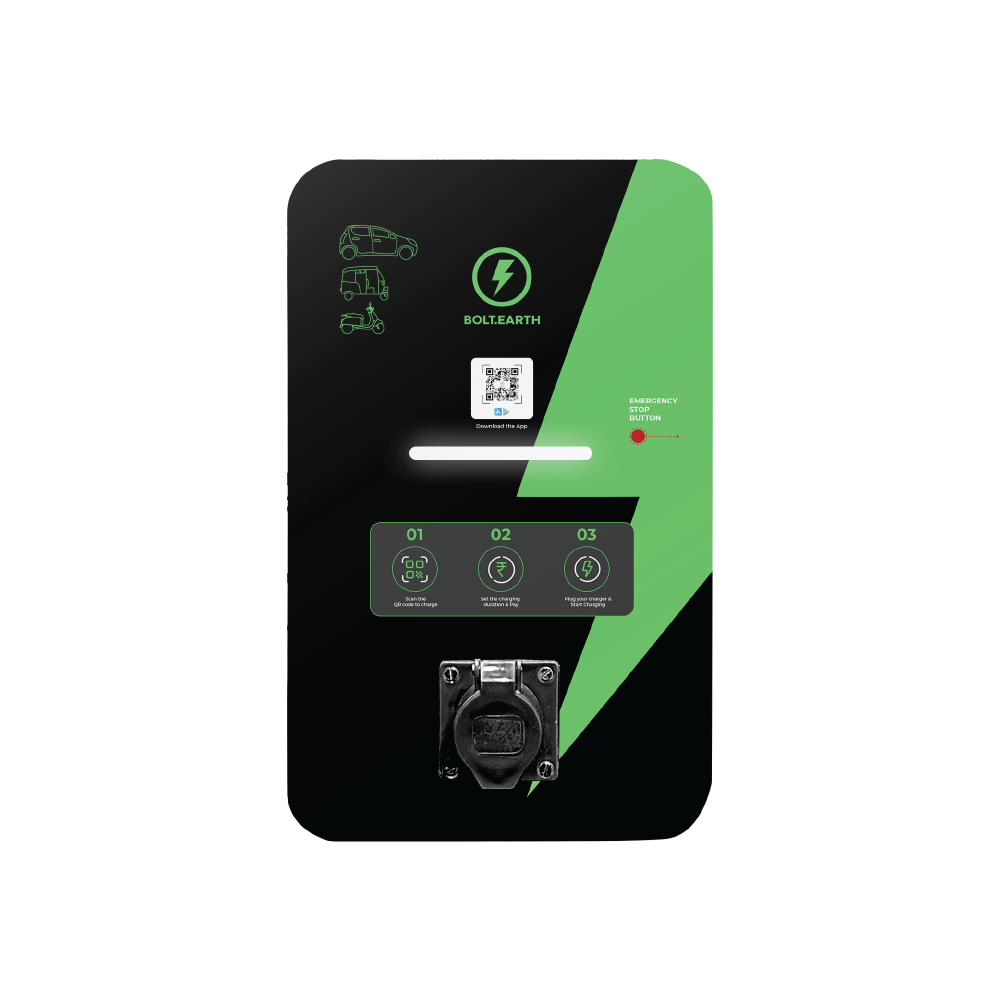DC Fast Charging for Fleets: How to Maximize Uptime and ROI
Raghav Bharadwaj
Chief Executive Officer
Published on:
24 Oct, 2025
Updated on:
24 Nov, 2025

India’s electric fleet revolution is gaining momentum, from nimble two-wheelers delivering groceries to electric buses running intercity routes. For fleet operators, EVs promise lower operating costs and higher productivity, provided vehicles spend more time on the road than at the charger. That’s where DC fast charging becomes a game-changer, enabling quick turnarounds, multi-shift operations, and seamless logistics through robust EV fleet charging infrastructure.
In this blog, we explore:
- How fast charging maximizes fleet uptime and operational flexibility
- Depot vs. public charging strategies, and how each model impacts cost, control, and reliability.
- The ROI equation for fast charging, with real-world examples from Indian fleets.
Why Fast Charging Maximizes Fleet Uptime
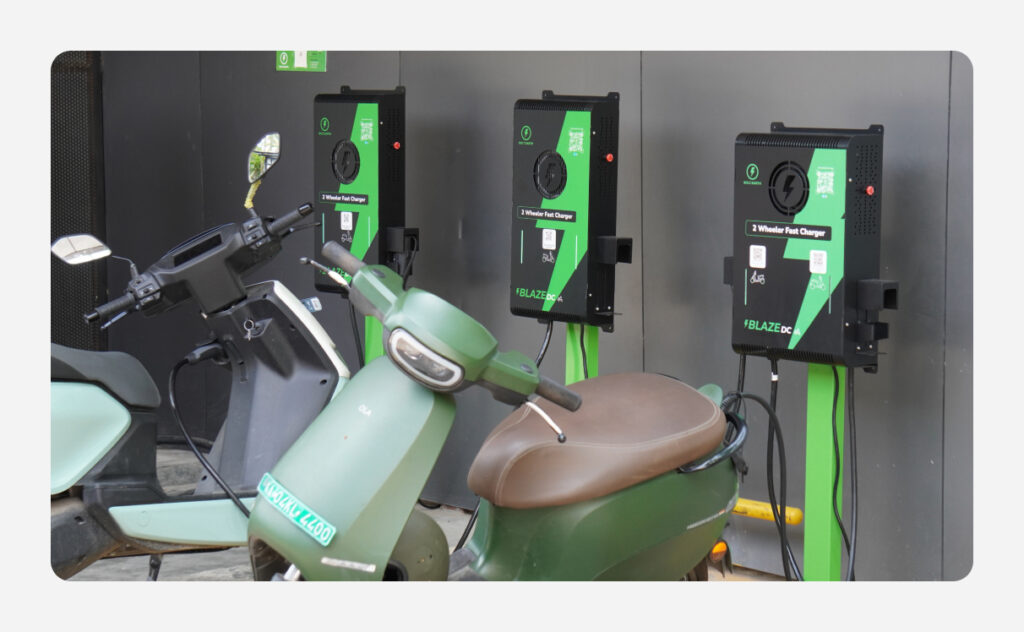
Vehicle downtime directly translates to lost revenue. A delivery van stuck at a charger for hours or a taxi offline mid-day is time lost. DC fast charging dramatically reduces charging time, thereby maximizing vehicle availability. In the context of fleets:
1. Minimized Downtime = More Trips
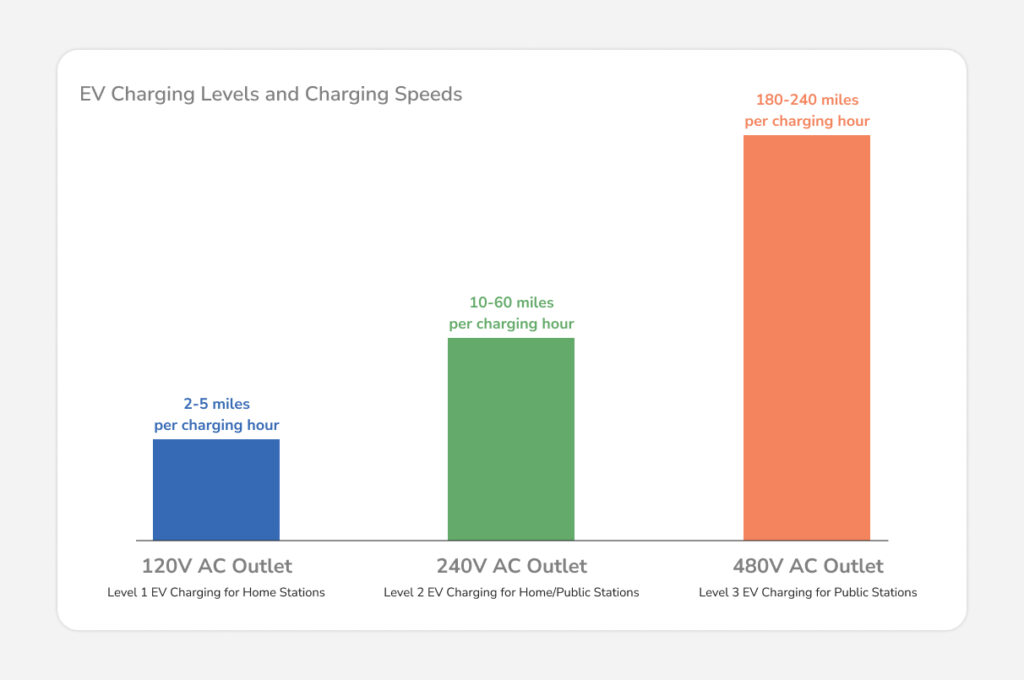
DC fast chargers (typically ranging from 50 kW up to 150+ kW) can recharge a vehicle’s battery to 80% in 30-40 minutes, as compared to 6 hours on a home outlet. Simply put, a vehicle that charges faster can complete more trips per day, directly boosting productivity and strengthening any fleet charging solution.
2. Operational Flexibility
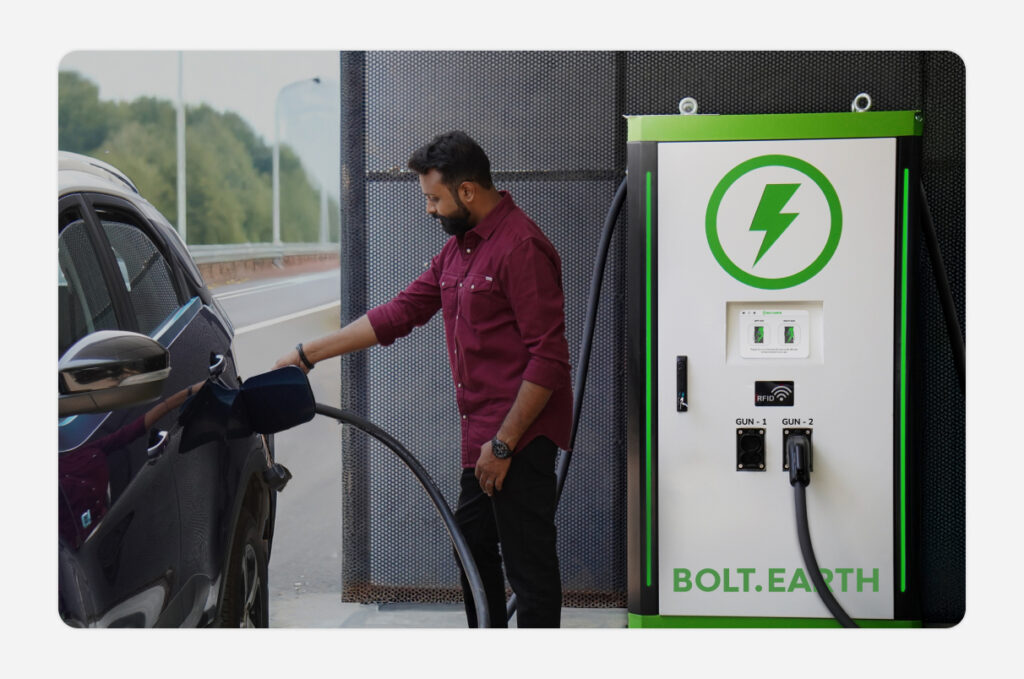
Fleets can top up batteries during short downtimes. For example, a bus charging at a terminal or a van during warehouse stops. Strategic scheduling during breaks or shift changes makes charging nearly invisible in terms of lost time.
3. Extended Service Hours
Fast charging enables multi-shift usage of EVs. For instance, a ride-hailing car can run morning and evening shifts with a quick afternoon charge. Delivery vans can do double runs, effectively doubling daily output.
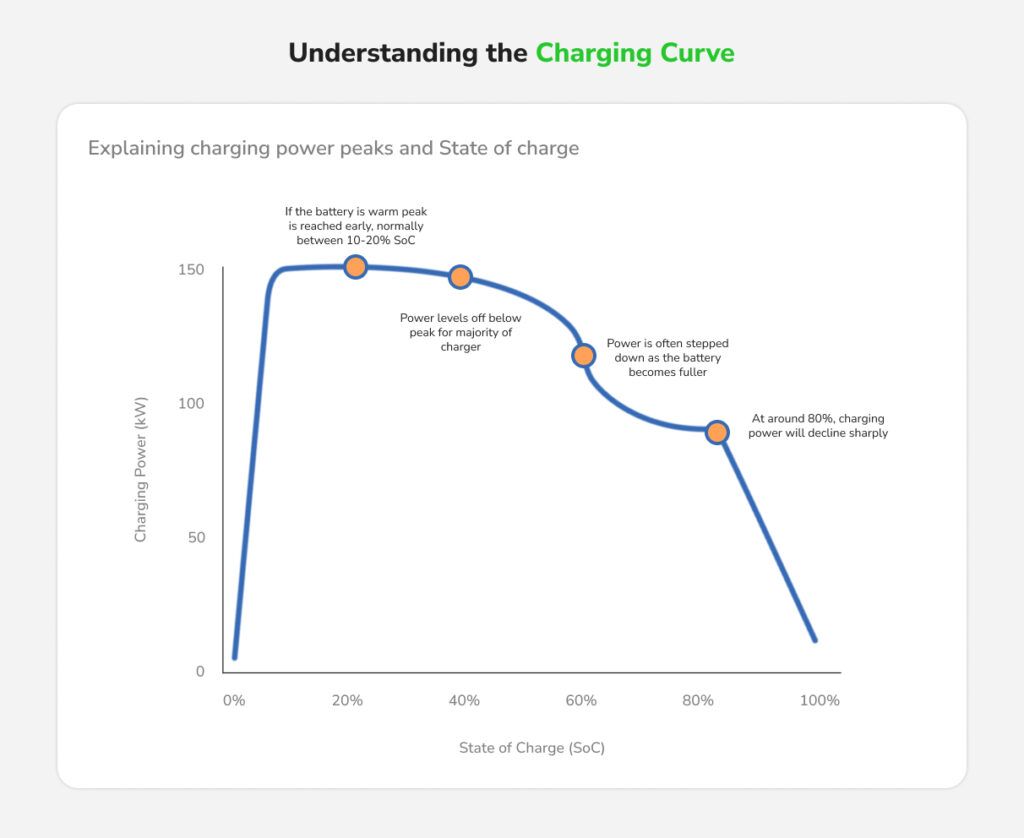
Flipkart’s finding of 20% faster delivery turnaround with EVs is in part due to leveraging quick charging and quick swaps to keep bikes and vans constantly moving.
4. Reduced Range Anxiety
While private EV owners might plan their day around a full charge, fleet vehicles often push the limits of range. Knowing that a fast charger is available provides confidence to dispatch EVs on longer routes or more trips. Amazon India’s highway trials with electric trucks show that uptime is achievable even for long-haul routes with adequate fast charging.
5. High Utilization Segments
Some fleet segments operate almost continuously. Segments like intercity buses or 24×7 delivery fleets rely on fast charging to maintain schedules. Charging 15 minutes every 300 km allows electric buses to mirror diesel pit stops, proving fast charging can eliminate EV downtime disadvantages.

Depot vs. Public Charging: Choosing the Right Strategy Fleet Charging
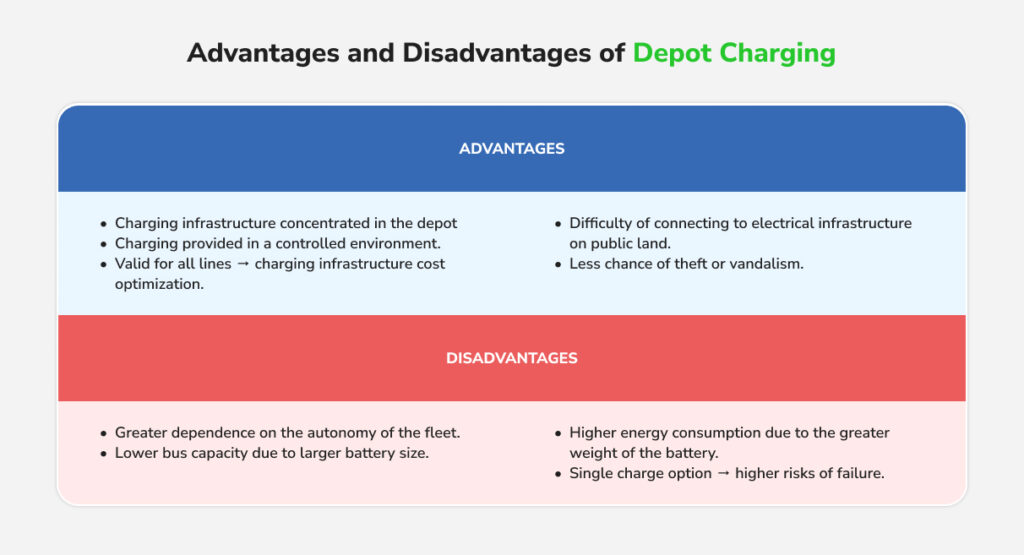
Fleet EVs can be charged at private depots (or hubs) controlled by the fleet operator or at public charging stations. Many fleets use a hybrid model, but optimizing the strategy is vital for cost and uptime. Let’s compare:
Depot (Private) Charging
This involves installing charging stations at fleet-owned or leased facilities, such as bus depots, delivery warehouses, taxi parking lots, etc. Depot charging can be further split into overnight slow charging and on-demand fast charging at the depot.
Advantages:
- Depot charging gives fleets full control and guaranteed access. Vehicles can charge on a set schedule, say, all vans overnight, without competing for spots.
- Smart charging with off-peak power and on-site renewables like rooftop solar with battery storage to cut energy costs.
- Customizable infrastructure (AC chargers for overnight use and DC fast chargers for quick top-ups).
- Lower electricity rates and high charger utilization.
- Avoids dependence on public infrastructure, letting fleets maintain their own high-uptime systems with built-in redundancy.
Challenges:
- High upfront costs for hardware and electrical upgrades.
- Depot space constraints and lead time for getting permits and utility approvals for large installations.
- Impractical for small fleet operators or those with distributed vehicles, e.g. gig workers who take vehicles home, may find it impractical to have their own depot for charging.
- Requires planning and investment but amortizes over time.
- Flipkart’s setup of 38 charging stations (190 fast ports) in smaller cities shows how depot charging ensures reliable access and long-term ROI.
Public DC Fast Charging
This refers to using third-party or government-run stations, available in cities and highways. Fleet vehicles can visit these stations and pay per use (usually per kWh or per minute).
Advantages:
- Public charging eliminates upfront infrastructure costs for fleets—the station operator handles setup and maintenance, while fleets simply pay per use.
- Ideal for small fleets or pilot programs with limited EV numbers.
- Enables en-route top-ups and emergency charging.
- Pay-per-use model offers flexibility and scalability as fleets grow. It acts as an operating expense rather than a capital investment.
Challenges:
- Unpredictable availability and potential queuing.
- Higher tariffs (₹18–22 per kWh vs ₹8–12 per kWh at depots). This can chip away at the per-km cost advantage of EVs if used excessively.
Due to these issues, fleet operators often prefer controlled environments. As one EV fleet operator put it, dedicated fast-charging hubs are preferred for high-reliability requirements or 24×7 operations– public chargers serve as a backup or overflow option.
In practice, many fleets adopt a hybrid strategy.
Most fleets adopt a depot-first approach with selective public charger use. Some even open depot chargers to the public during off-hours to generate revenue and maximize utilization.
Ultimately, the choice comes down to scale and control. Large, mission-critical fleets (buses, large e-com delivery operations, taxi fleets) lean towards building their own fast-charge facilities to guarantee uptime. Smaller fleets or those in early stages might lean more on public chargers until their usage justifies dedicated installations. In either case, fast charging – whether at a depot or public – is a cornerstone of fleet electrification economics. Next, let’s look at how fast charging translates into ROI for fleet operators, with some real-world data from Indian deployments.
Fast Charging and Maximizing Fleet ROI
Fuel Cost Savings
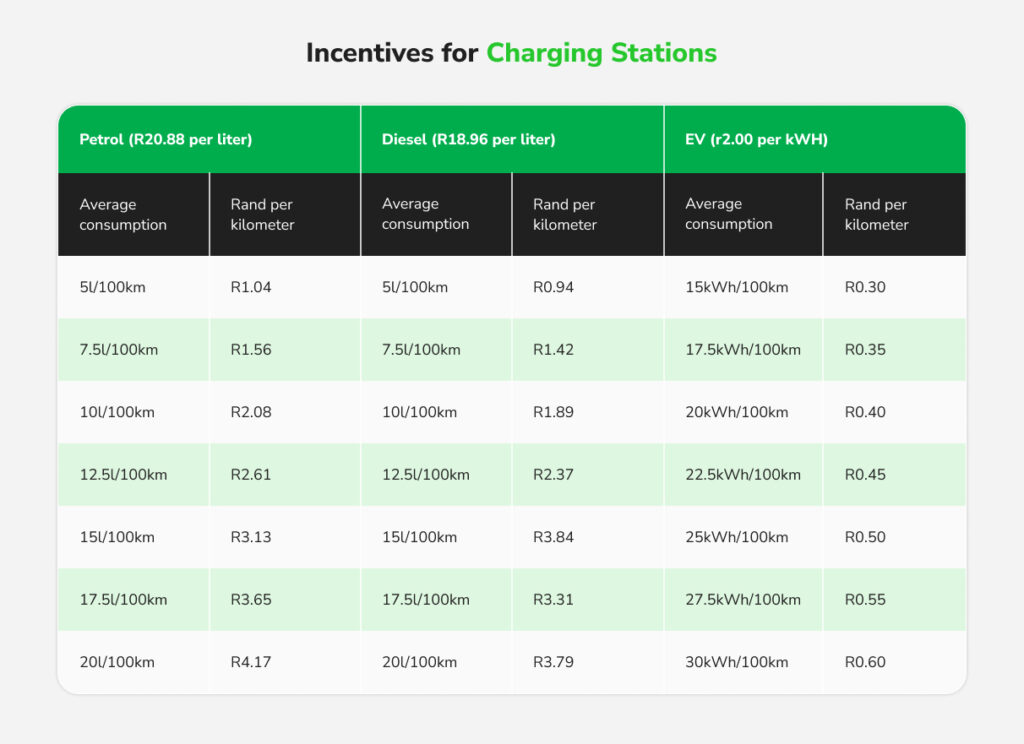
Electricity is much cheaper per kilometer than diesel or petrol. This is the fundamental source of EV cost advantage. For high-mileage fleet vehicles, the fuel savings accrue quickly, and fast charging enables more electric kilometers per day.
According to industry analysis, most EV categories in India are already TCO-positive in high-use scenarios, meaning over the vehicle’s life, they turn out cheaper than ICE vehicles when driven a lot. By allowing vehicles to stay in service longer each day, fast charging effectively increases the daily kilometers driven on electricity, thereby accelerating fuel cost payback.
For example, an electric delivery van running 150 km/day (vs. 75 km/day with slow overnight charging) doubles diesel displacement. Over a year, this translates to tens of thousands of rupees saved, offsetting charger investment.
Higher Productivity and Revenue
Flipkart’s 20% improvement in delivery speed and reduction in cost per order shows how fast charging boosts operational metrics. In ride-hailing, quick charges between rides enable trips and higher fare revenue.
Competitive and Sustainability Edge
Fast charging supports sustainability goals and brand positioning. Companies like Flipkart use their EV fleets and charging infrastructure to gain goodwill and attract eco-conscious clients. This strategic edge enhances ROI beyond direct cost savings.
Battery Swapping vs Fast Charging
For two- and three-wheelers, battery swapping has emerged as an alternative to fast charging to maximize uptime. Studies show 15% lower TCO and 30% higher earnings for e-rickshaw drivers using swaps.
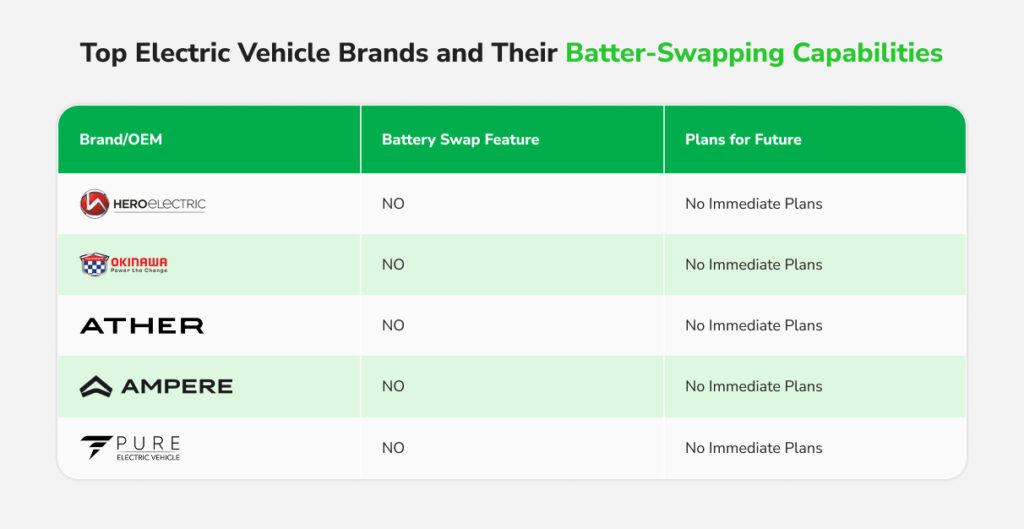
Companies like Zomato, Blinkit and Zepto leverage this for nonstop delivery. However, swapping is limited to light EVs. For cars, vans and buses, fast charging still remains the dominant solution. Standards like CCS2 and GB/T are mature, and government policy too favors fast charging for heavy vehicles.
Maintenance and Lifespan Benefits
Fast charging, when managed well, contributes to lower maintenance costs and longer vehicle life, indirectly boosting ROI. Modern EVs are built for rapid charging, with warranties covering high cycle counts. Some fast-charging hubs use battery storage to buffer the grid, reducing stress on vehicle batteries.
Longer service life means the initial purchase cost is spread over more kilometers and years, improving the overall ROI. It’s worth noting that excessive fast charging can degrade older batteries, but today’s tech and thermal management mitigate the impact. Many fleet operators factor this into the TCO model and still find fast charging worthwhile.
Final Thoughts
As technology evolves and scale drives costs down, DC fast charging will only become more accessible and even faster. Fleet managers who embrace it today will position their operations to ride the wave of electrification efficiently. Maximizing uptime is no longer just about better scheduling, it’s about electrifying smartly.
DC fast charging unlocks the true potential of electric fleets, ensuring that going green doesn’t mean slowing down. In fact, with the right charging strategy, your electric fleet might just outpace the old diesel one, both in performance and profitability.

Frequently Asked Questions
Is DC fast charging financially viable for small fleet operators?
Yes, fast charging is financially viable for small fleet operators, especially with shared or pay-per-use charging networks. Smaller fleets can start with public fast chargers to avoid upfront infrastructure costs. As vehicle count and mileage grow, investing in a private depot charger becomes cost-effective due to lower per-kWh rates and higher uptime. Hybrid models often offer the best ROI balance.
How do I know if my fleet needs DC fast charging?
If your vehicles run multiple shifts or over 150 km daily, fast charging helps keep them running instead of idle.
How soon does DC fast charging pay off?
For high-mileage fleets, ROI usually comes within 1.5–2 years through higher uptime and lower fuel costs.



